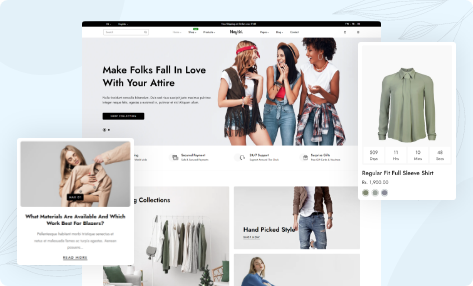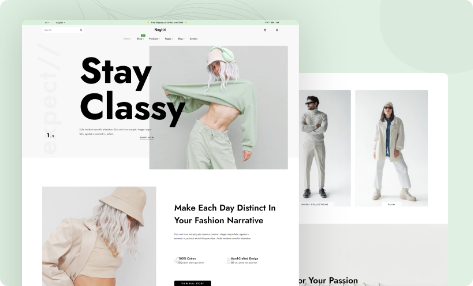Organizations need an effective way to manage how their content reaches the right audience in today’s fast-paced digital environment and a stream of information overload from every corner of the internet. The optimal solution that emerges here for this task is content mapping. Content mapping is a process that aligns with users’ complex journeys. It has a deep understanding of their actions, with the goal of being able to guide them to their desired destination.
Content Mapping real magic lies in its detail. Careful crafting weaves an interesting story, ensuring the audience returns for more. In this article, we will delve into understanding the concept of content mapping, content mapping tools, content mapping examples, its strategies and the significance of content mapping for website. In addition, the article involves a precise overview of the funnel formula (top of the funnel, middle of the funnel and the bottom of the funnel) and its relation with the content mapping.
 When was the last time you made an immediate purchase from a brand-new website without doing any research? We guess never. It’s because of the complexity that lies with the purchasing experience that ‘see the product, buy the product. Instead, there are levels to this. For example if your buyer’s journey begins with the research of a product using a search engine like Google then you’re like 89% of other customers online. At this you might look for educational and informative content about the product of interest for buying.
When was the last time you made an immediate purchase from a brand-new website without doing any research? We guess never. It’s because of the complexity that lies with the purchasing experience that ‘see the product, buy the product. Instead, there are levels to this. For example if your buyer’s journey begins with the research of a product using a search engine like Google then you’re like 89% of other customers online. At this you might look for educational and informative content about the product of interest for buying.
So, if your customers are doing informative searches, land on product pages pushing hard to convert, and they will likely click away. In this case, as you present your customer with the very end of theirs buyer journey and not the beginning, it means your content mapping was off. When you have done correct content mapping, you’ll always present the perfect content to your customers at the right time, effectively making you a mind reader. Stay with me to learn how to master the art of content mapping for your business.
Content mapping truly shines when you blend it with analytics and insight, as it goes beyond just planning and organizing. This combination becomes a flexible tool that can handle the audience’s ever-changing preferences and behaviours. It also provides you with the power of consistently fine-tuning your content strategy.
What is Content Mapping?
You all will be curious to know that what actually is content mapping. Content mapping means aligning your content with your audience, their problem, and their customer journey. It’s a strategy to have a better reach of the right content to the right people at the right time. It maps every piece of created content to the targeted audience’s customer journey. Without it, your content and its message will miss the mark.
Through content mapping, you can learn the following:
- Learn about the needs of your audience at every stage of the customer journey.
- Get maximum results by uncovering the best content ideas and formats to focus on.
- Build an effective content calendar and meet deadlines.
- Empowering your sales and customer success with relevant content at crucial stages.
It can be a source of huge investment of time and money, especially for startups getting started. Content mapping makes sure to get most of every piece of your content. It also helps to generate leads, loyalty, and revenue. You might be about to put effort into creating a proper content map if you have been doing SEO for a while. After all, if you are ranking high then why not make the content more appropriate to hunt clients? Your conversion rates and bounce rates can be low, while your ranking is of your choice. It’s because, without proper mapping, you are not satisfying each visitor’s intent and likely causing them to leave without your desired action being completed. In other words, content mapping helps you get the most out of your SEO efforts.
If you are not fulfilling the search intent of your organic visitors, then despite being No1, it will not make you money and have no loyal customer base either. If visitors are spending a few seconds on any of your pages, then all the hard work in becoming high rank is a waste. For this reason, you have to take SEO and Content Mapping side by side, as it is not desirable to have one without the other. You must build a picture-perfect customer experience through content mapping to increase conversion.
Why Do You Need Content Mapping?
If you’ve been doing SEO for a while now, you may be on the fence about putting the effort into creating a proper content map. After all, if you’re ranking high for your target keywords, why fix what isn’t broken by throwing a content map into the mix?
Well, while your rankings may be where you want them, your conversion rates, bounce rates, and dwell times are likely off. That’s because, without proper mapping, you aren’t satisfying each visitor’s search intent, likely causing them to leave without completing your desired action (i.e., signing up for your newsletter, making a purchase, etc.). In other words, content mapping helps you get the most out of your SEO efforts.
Even with lots of #1 rankings, if you aren’t fulfilling the search intent of your organic visitors, your bank account won’t grow – and you won’t build a loyal customer base, either. If visitors leave a few seconds after landing on one of your web pages, all that hard work you put into obtaining high rankings was for nothing. For this reason, content mapping and SEO go hand-in-hand, as you wouldn’t want to have one without the other. Suppose you want to see more conversions and build a better reputation. In that case, you must build a picture-perfect customer experience through content mapping, so let’s learn how.
Content Mapping and the Funnel Formula
From the first point of contact all the way to the final conversion, the sales funnel depicts the buyer’s journey visually. A planned method of leading prospective clients through the sales funnel’s several phases is known as the funnel formula.
Top of the Funnel
At the top of the funnel, there is the awareness stage, where potential buyers need to know about your brand. Here, the primary objective of content creation is to generate interest and provide a solution to a problem.
Middle of the Funnel
In the middle of the funnel, there are the individuals who may or may not become a client. Hence, your content will act as a key to unlocking your potential for sales by providing the accurate information that other people are looking for in order to buy a product.
Bottom of the Funnel
At the bottom of the funnel, the individuals are on the verge of being your customers. Here, the content will help them in their decision-making process by educating them about the advantages and disadvantages of the product.
Four Strategies of Content Mapping
Here are four simple and effective steps to map your content to supercharge your marketing funnel.
Know who your ideal client is.
This is crucial if you’re running a B2B or B2C business. Your ideal client profile will guide your content and mapping strategy. Now, you may think that this is something that most businesses have mastered since it’s now become a requirement when you launch any marketing strategy, especially in your marketing funnel’s decision stage.
According to Grant Deken, Founder of Spark CMS, understanding how to make your prospective customers comfortable and secure with their purchase decisions is gold. It’s what can help you identify and create the right kind of content on different conversion points so that they take the action you want. Yet, 65% of marketers and business owners still don’t get it. The reason is very simple. When marketers and business owners create their buyer personas, they tend to do so based on what they think their customers would want to receive. The problem with this is that they’re approaching the creation of their buyer persona through the eyes of a marketer, not a customer.
As a result, there’s a disconnect between the content they publish at different stages of their marketing funnel and what their customers want and need to receive. So, how do you create a strong buyer persona that would give you a meaningful look into your customers’ thinking? You’ll need to ask them. Send out a survey or an invitation to interview those who are already on your email list. Ask insightful, open-ended questions. You can use a tool like Mention to check which of your competitors’ content is getting the most engagement from your shared target customers. Take notes and create similar content on your site.
Understand how your customers buy
In Content Mapping, timing is critical. It’s the secret as you will be giving the right content at the right time and personalize content. This will make your customer take action and move further with the buyer’s journey. An excellent example of this is what Airbnb founders Brian Chesky and Joe Gebbia did when they were trying to come up with a marketing strategy. They asked themselves one simple question: where would their customers go if Airbnb didn’t exist? This led them to be their potential customers as they kept in mind the websites and channels to find the places to stay. They also came to know about the selection process. They then began applying this, not just to their content mapping but also to build an entire business, and the rest is history.
Create the right content
Thinking of content mapping is just like a jigsaw puzzle. Sometimes you might find a piece that fits in a particular spot. However, when you begin to join the rest of the puzzle, it does seem to be fitting. The same is the case with content mapping. Even if your content is great, if not sent at the right time, it will not give the conversion result you are hoping for. Before talking about the type of content to be included in the marketing funnel, let’s take a step back and look at the marketing funnel overall. A marketing funnel is made of four distinct stages: awareness, consideration, decision, and delight.
- Invest in the right content marketing tools
There are lots of marketing tools available for your business, and that’s good news. However, choosing the right tool to be included in your marketing stack can be a pain, especially when it’s about choosing a tool to be used by the sales and marketing team. It’s because most of these tools don’t “Talk” with each other, and it can be a misalignment between sales and marketing teams.
So choosing a tool that will help you get the work done is not enough; it also has to make sure that these tools seamlessly integrate. In this way, you and your team can monitor the progress of content mapping efforts and adjust where issues may arise. EffinAmazing’s Founder and CMO, Dan McGaw, created an excellent Marketing Technology Stack guide where he shares not only the tools they use for their content marketing but also how he gets them to work together without any hassle. Make sure to check them out.
Go Forth and Map Your Content
All you need is to create content that ensures the result is to ask and answer the right questions. When you have them, answer them by filling out a simple but mighty table and build a calendar packed with content that will improve your business. With content mapping, you can change your content from a guessing game to providing what your customer desires. It is an effective way to send the right content at the right time and increase leads. You can boost your conversion rate and begin to get more leads and customers for your business by following the steps mentioned here.























